Utilities
Waivers
Your shipment may require an exemption certificate or other special documentation. Certain African countries require exemption certificates before cargo arrives at the port of delivery.
Exemption certificates (also known as ECTN – Electronic Cargo Tracking Note) are required by certain African countries to effectively control, monitor and manage import/export traffic into the country.
The cargo release documents have full details of the exporter/importer, the method of shipment (containerised, groupage, etc.), the type and value of goods being transported, the name of the vessel and the freight cost of the shipment. These exemptions are handled by the importer or exporter and must be submitted before the cargo arrives at its port of discharge.
If you are shipping to, or through one of the countries below, your cargo may need a waiver certificate document to clear customs and avoid costly fines/seizures.
In the following link, you can consult the requirements and detailed information on the different waivers by country:
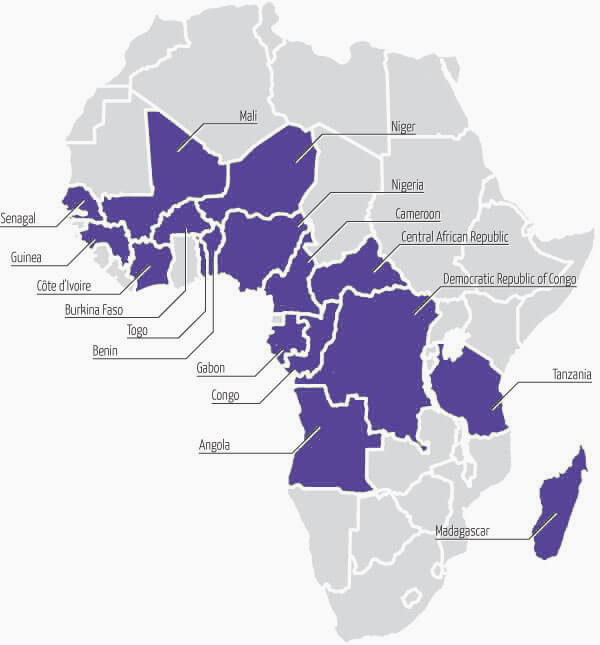
Incoterms
“Incoterms” is the abbreviation for “International Commercial Terms”. It is a set of 11 rules, first published in 1936, which defines who is responsible for what aspect of international transactions.
They are known and accepted worldwide. They are a prerequisite for any commercial invoice and reduce the risk of any misunderstanding, which could result in the loss of a lot of money.
Incoterms detail the tasks, risks and costs associated with goods transactions, from the seller to the buyer.
Here are the different types of Incoterms:
Containers

20’ Dry Van container
Suitable for all types of general cargo. Can be loaded with liner bags suitable for bulk cargo.
Inner dimension
Longitud: 5,898 m | Ancho: 2,352 m | Alto: 2,393 m
Weights
Max: 30,48 t | Tara: 2,34 t | Max Carga: 28,14 t
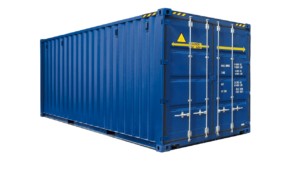
20’ High Cube container
Suitable for all types of general cargo. Can be loaded with liner bags suitable for bulk cargo.
Inner dimension
Longitud: 5,898 m | Ancho: 2,44 m | Alto: 2,72 m
Weights
Max: 30,48 t | Tara: 2,34 t | Max Carga: 28,14 t
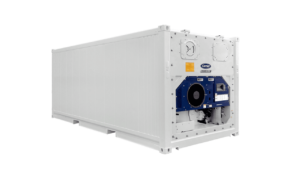
20’ Reefer container
Particularly suitable for cargo requiring a constant temperature above or below freezing point. A dehumidification option is available.
Inner dimension
Longitud: 5,468 m | Ancho: 2,294 m | Alto: 2,273 m
Weights
Max: 30,48 t | Tara: 2,9 t | Max Carga: 27,58 t

20’ Flat Rack container
Particularly suitable for heavy loads and large loads. It has lashing rings on both sides.
Inner dimension
Longitud: 5,568 m | Ancho: 2,21 m | Alto: 2,279 m
Weights
Max: 34 t | Tara: 3,05 t | Max Carga: 30,95 t
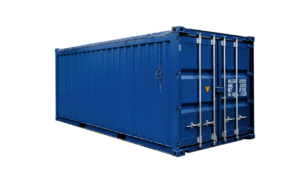
20’ Open Top container
20-foot Sea Container. With the top opening it is designed for loading and unloading from the roof. Particularly useful for handling heavy loads.
Inner dimension
Longitud: 5,898 m | Ancho: 2,352 m | Alto: 2,348 m
Weights
Max: 30,48 t | Tara: 2,4 t | Max Carga: 2,4 t
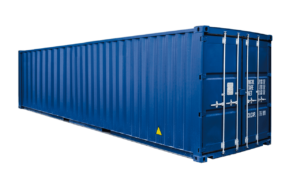
40’ Dry Van container
It has several lashing devices on the upper and lower longitudinal beams and the corner posts. Hava lashing devices with a permissible load of 1000 kg each are also available.
Inner dimension
Longitud: 12,032 m | Ancho: 2,352 m | Alto: 2,352 m
Weights
Max: 32,5 t | Tara: 3,8 t | Max Carga: 28,7 t

40’ High Cube container
Maritime Container specially prepared for light and bulky cargo with a maximum height of 2,70 m.
Inner dimension
Longitud: 12,032 m | Ancho: 2,352 m | Alto: 2,698 m
Weights
Max: 30,48 t | Tara: 4,01 t | Max Carga: 26,47 t
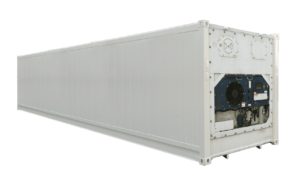
40’ Reefer container
Particularly suitable for cargo requiring a constant temperature above or below freezing point. A dehumidification option is available.
Inner dimension
Longitud: 11,59 m | Ancho: 2,294 m | Alto: 2,554 m
Weights
Max: 34 t | Tara: 4,56 t | Max Carga: 29,44 t

40’ Flat Rack container
Particularly suitable for heavy loads and large loads. It has lashing rings on both sides.
Inner dimension
Longitud: 11,702 m | Ancho: 2,208 m | Alto: 2,001 m
Weights
Max: 45 t | Tara: 6,1 t | Max Carga: 38,9 t
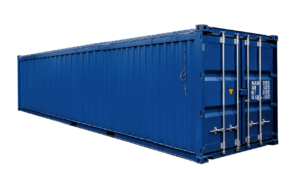
40’ Open Top container
With the top opening it is designed for loading and unloading from the roof. Particularly useful for handling heavy loads.
Inner dimension
Longitud: 12,032 m | Ancho: 2,352 m | Alto: 2,348 m
Weights
Max: 30,48 t | Tara: 3,88 t | Max Carga: 26,6 t
VGM
The International Maritime Organisation (IMO) has amended the Safety of Life at Sea (SOLAS) Convention to require, as a condition for loading a full container on a ship for export, that the container be verified for gross weight. This change will affect the entire container shipping industry.
The shipper is responsible for obtaining the verified gross weight of a full container and communicating it to the shipping line.
According to the SOLAS amendment, containers with misdeclared weight have a major impact on the stability of ships, trucks and terminal equipment. This can pose a serious threat to the safety of workers in the industry and even endanger their lives.
All containers to which CSC (International Convention for Safe Containers) applies, which are stowed on a ship which according to the Administration is subject to SOLAS Chapter VI, must be weighed.
As of 1 July 2016 it will be a violation of SOLAS to load a full container onto a ship if the ship operator and the marine terminal operator do not have the verified gross weight of the container.
The shipper (SHIPPER) is responsible for providing the verified weight.
If a container arrives at the port without a verified weight it cannot be loaded on a vessel.
In the following link, you can consult the frequently asked questions about the verified gross weight: Frequently asked questions
Clasificacion IMO
Dangerous goods or IMO (International Maritime Organization) goods are those which, due to their properties and characteristics, represent a risk to the safety and health of persons.
Dangerous goods are classified into 9 different categories, according to their characteristics and degree of danger. It should be noted that the order in which the classes are numbered is not related to the magnitude of the risk, therefore, Class 1 goods (explosives) could be equally or more dangerous than Class 7 goods (radioactive), as their danger depends directly on technical and/or chemical factors.
In order for a container to carry IMO cargo, it must bear labels on all four sides, which must indicate IMO class and number, according to the following list:
TARIC
The tariff classification of a good consists of assigning it one of the European Community’s integrated tariff codes (TARIC).
TARIC consists of the tariff nomenclature (composed of chapters, headings and subheadings) and the customs duties (the charge assigned to each of the headings and subheadings).
In the following link, you can search and consult the different TARIC: Consult TARIC
Documentation
Document required for any export, whether by vehicle, container, groupage or air. The exporter must always authorise the customs agent by means of this document or by completing it online. If it is on paper, it must always be accompanied by a copy of both sides of the DNI/NIE of the Exporter (individual) or the DNI/NIE of the Administrator of the company.
This document is necessary for the export of vehicles in ownership, in order to be able to give a real and reliable value to the Spanish customs office of exit.
Document to be completed for any container or groupage containing personal effects. These must always be covered by an INVOICE for proper customs clearance.
Necessary to be able to prove to customs the purchase of a vehicle for which no change of name has been made as it is for export.
Necessary document for the processing by us of the Baja de Exportacion. It must be signed by the vehicle’s Real Owner.
This document must always be filled in by the shipper, unless prior to loading, weighing is requested at the port or by any other accredited means/scale.
Document required for certain exports or imports where Customs requires it for HS CODE. Always to be completed by the Exporter.
Document required for exports of various HS CODE. To be completed by the Exporter.
Document required for the export of any vehicle in a container, to be completed by the exporter/owner of the vehicle.
